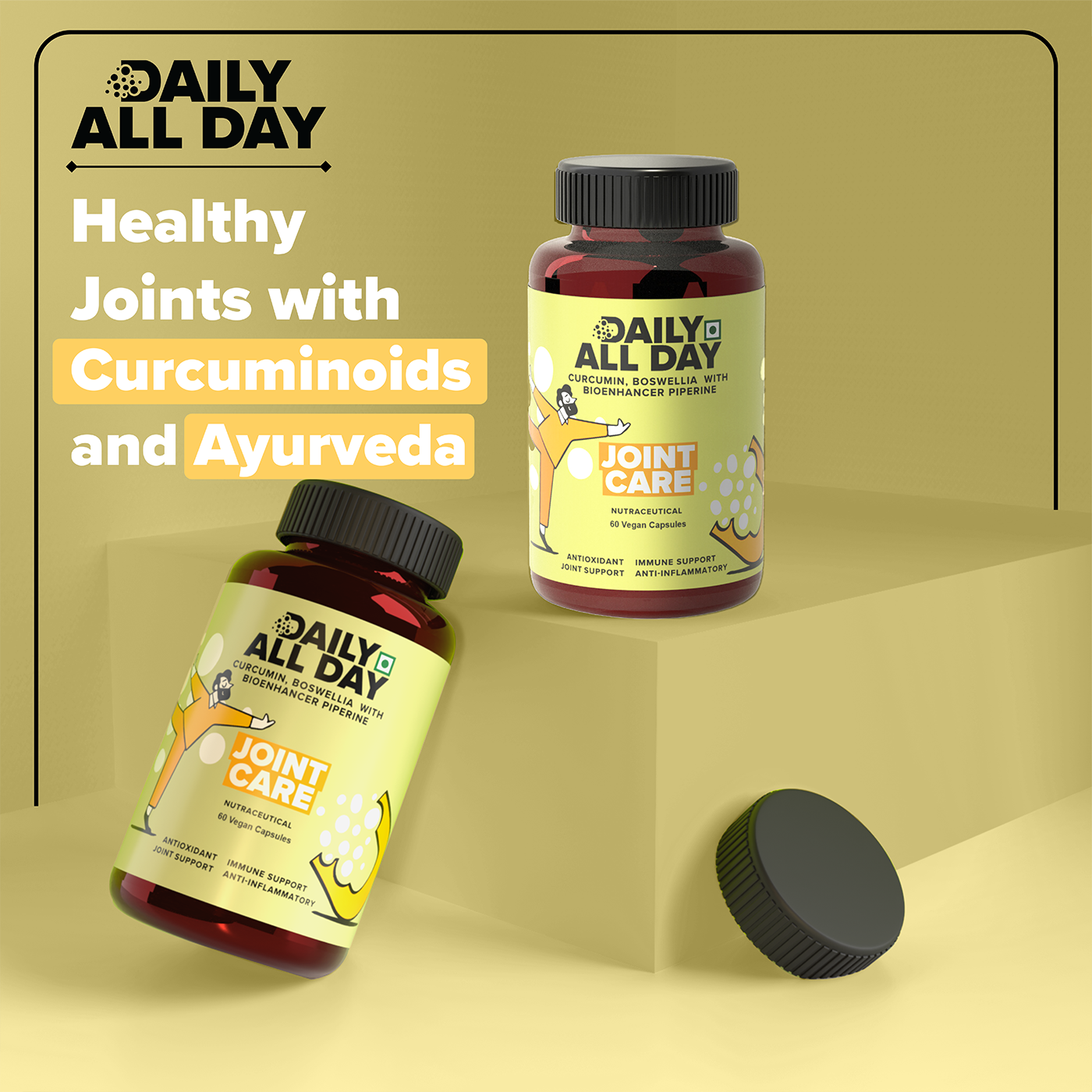Do you have anyone in your family and friends circle who constantly suffers from pain and mobility issues, as they are becoming more and more common with time. It could be lower back pain due to long hours at the workplace, joint discomfort due to issues like rheumatoid arthritis or it could be just general muscle pain and leg cramps. We have Yoga on our side which offers a natural and effective way to manage pain and improve flexibility. By combining physical postures, breath control, and mindfulness, yoga addresses both physical and mental well-being.
Here is a guide of how yoga asanas can help relieve pain and boost mobility along with some Ayurvedic remedies.
Benefits of Yoga for Pain Relief and Mobility
- Reduces Muscle Tension- Yoga stretches help loosen tight muscles, providing relief from muscle pain caused by inactive lifestyles.
- Improves Joint Health- Certain yoga poses lubricate the joints, which can benefit individuals dealing with rheumatoid arthritis. Unlike pain killers, yoga addresses the root cause of joint pain by enhancing circulation and reducing inflammation.
- Supports Spinal Health- Lower back exercises in yoga, such as Cat-Cow Pose or Sphinx Pose, can strengthen the back muscles and alleviate discomfort, promoting better posture and flexibility.
- Enhances Mobility- Regular practice of yoga asanas improves overall body flexibility, allowing smoother movement and better range of motion.
- Provides Mental Relaxation- Pain often leads to stress, which can amplify discomfort. Yoga helps relax the mind, reducing stress and making pain more manageable.
Top Yoga Asanas for Pain Relief and Movement
- Surya Namaskar (Sun Salutation)- Surya Namaskar (Sun Salutation) is a holistic yoga sequence that stretches all major muscle groups, improving flexibility and reducing stiffness. Practicing this sequence daily can help ease muscle pain and keep joints mobile.
- How it Helps- Strengthens muscles, boosts blood flow, and improves posture.
- Cat-Cow Pose (Marjaryasana-Bitilasana)- This simple flow stretches the spine and helps alleviate lower back pain.
- Benefits- Loosens tight back muscles and increases spinal mobility.
- Child’s Pose (Balasana)- This calming pose gently stretches the hips, thighs, and lower back.
- How it Helps- Provides relief from tension and promotes relaxation, especially after long hours of sitting.
- Cobra Pose (Bhujangasana)- Cobra Pose strengthens the spine and opens the chest, making it ideal for back pain relief.
- Benefits- Improves posture and reduces stiffness in the lower back.
- Bridge Pose (Setu Bandhasana)- This asana strengthens the lower back and glutes while improving flexibility in the spine.
- Benefits- Helps with lower back pain and stretches the abdominal area.
Rheumatoid Arthritis Treatment
Yoga can be particularly beneficial for individuals with rheumatoid arthritis. Gentle stretches and low-impact poses help reduce joint pain and stiffness. Incorporating Ayurveda into your routine can further enhance the effects. Herbs like turmeric and ashwagandha are known for their anti-inflammatory properties.
Lower Back Exercises
For those struggling with chronic lower back pain, poses like Sphinx Pose and Forward Fold provide relief by gently stretching and strengthening the lumbar region.
Muscle Pain Relief
Yoga’s focus on controlled stretching and relaxation makes it an excellent alternative to pain killers. Poses like Downward Dog and Triangle Pose help ease muscle soreness by improving circulation and reducing tension.
The Role of Ayurveda in Pain Management
Ayurveda complements yoga beautifully by offering natural remedies for pain relief. Here are a few Ayurvedic tips:
- Herbal Oils: Massaging the affected areas with oils like Mahanarayan oil can reduce stiffness and inflammation.
- Dietary Adjustments: Consuming anti-inflammatory foods such as ginger, turmeric, and garlic can ease pain from within.
- Herbs like Ashwagandha: Known for its adaptogenic properties, ashwagandha helps manage stress and supports joint health, making it particularly effective for rheumatoid arthritis.
Incorporating Yoga and Ayurveda into Your Daily Routine
- Start your day with Surya Namaskar (Sun Salutation) to energize your body.
- Practice gentle stretches in the evening to unwind and relieve muscle tension.
- Include Ayurvedic herbs like ashwagandha in your diet to boost overall health.
- Dedicate at least 15 minutes daily to mindfulness or meditation to address the mental toll of chronic pain.
Conclusion
Yoga is not just about physical postures; it’s a holistic approach to well-being. By addressing the body, mind, and soul, yoga provides lasting relief from pain and enhances overall mobility. Paired with Ayurveda, it creates a sustainable and natural path to health.
With consistent practice, yoga can transform your relationship with your body, making it stronger, more flexible, and pain-free. Ready to roll out your mat and start your journey to pain relief and better mobility?
Frequently Asked Questions (FAQs)
- Can yoga reduce pain?
Yes, yoga is highly effective in relieving various types of pain, including muscle pain, joint pain, and chronic conditions like lower back pain. Regular practice improves flexibility, reduces tension, and enhances circulation, all of which contribute to pain relief.
- Can yoga cure muscle pain?
Absolutely! Yoga poses like Downward Dog, Forward Fold, and Bridge Pose enhance circulation, relax tight muscles, and promote faster recovery after strenuous workouts.
- Which yoga poses are best for rheumatoid arthritis?
Gentle poses like Child’s Pose, Cat-Cow Pose, and Cobra Pose are excellent for reducing joint stiffness and improving mobility in individuals with rheumatoid arthritis.
- How often should I practice yoga for pain relief?
Practicing yoga 3–5 times a week for at least 20–30 minutes can provide significant relief from pain and improve overall flexibility and mobility.
READ MORE- WHY DO YOU NEED OMEGA 3-6-9?



















